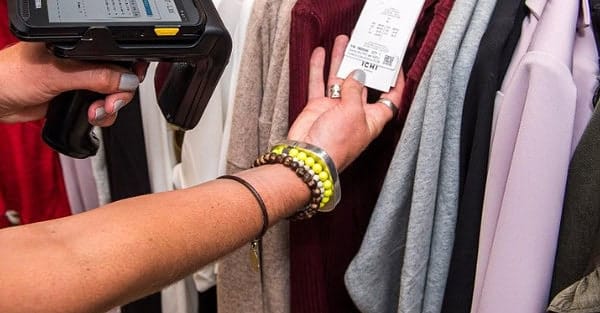New York, NY – At NRF 2024: Retail’s Big Show, a familiar theme ran through the halls of the Javits Center—retail theft is getting smarter, but so is RFID. In an era where loss prevention is no longer about locking up high-theft items but leveraging real-time analytics, RFID is evolving from an inventory management tool into a forensic asset for major brands like Levi’s, Walmart, and Nike.
Kirsten L’Orange, VP of Global Direct-to-Consumer Omnichannel Efficiency at Levi Strauss, didn’t mince words when discussing RFID’s impact on store intelligence. “We’re not just counting jeans anymore; we’re mining our own stores for data,” she said. RFID allows Levi’s to serialize every item, offering an unprecedented level of inventory accuracy that’s now being weaponized against organized retail crime.
Retail’s Digital Eyes and Ears
Retail shrink is a $100 billion problem in the U.S. alone, with incidents of theft rising 37% year-over-year, according to NRF 2024 data. But RFID, combined with AI, computer vision, and IoT, is turning store shelves into digital eyes and ears.
- Zebra Technologies, a dominant player in RFID and barcode scanning, showcased how RFID-powered smart shelves are detecting real-time theft patterns. Instead of waiting for loss prevention teams to review security footage, RFID tags are triggering alerts as soon as an item is hidden or removed without payment.
- Impinj, a leader in RAIN RFID solutions, demonstrated how serialized product data can now be cross-referenced with video analytics, linking specific stolen SKUs to time-stamped security footage.
Amazon’s “Just Walk Out” Meets RFID Security
While Amazon Web Services (AWS) made waves with its cashier-less Just Walk Out stores, retailers are taking this a step further by integrating RFID into frictionless checkout. RFID-backed payment verification means that a potential theft—an item being concealed instead of scanned—triggers an AI-driven intervention, seamlessly converting an attempted theft into a legitimate purchase.
From Loss Prevention to Legal Evidence
RFID isn’t just stopping shrink in real time—it’s also holding thieves accountable. As more retailers work with law enforcement, RFID serialization is being used as forensic evidence in theft investigations. Each RFID-tagged product comes with a unique digital signature, making it harder for stolen goods to be resold without detection.
The Retail Future: Smarter Stores, Fewer Losses
The takeaway from NRF 2024? RFID has evolved. It’s no longer just about inventory accuracy—it’s about intelligence, security, and automation. Retailers leveraging Zebra scanners, Impinj tags, and AWS analytics aren’t just preventing shrink—they’re making their stores smarter, more responsive, and ultimately more profitable in a rapidly shifting retail landscape.


